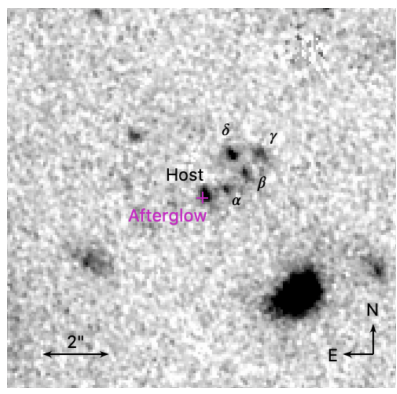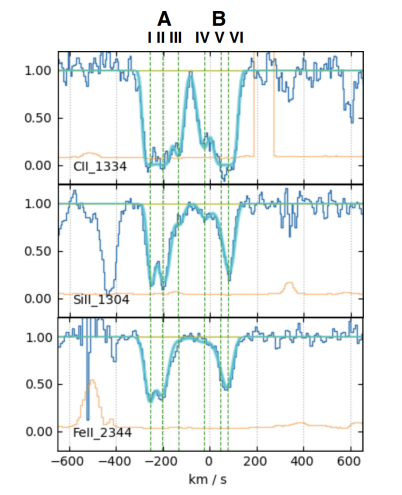One of the main themes of current astrophysics is the study of the properties of galaxies in the first billion years after the Big Bang. The James Webb Telescope (JWST) is making huge strides in this direction. However, neutral gas, which is an essential ingredient of high redshift galaxies that contain the majority of metals, remains elusive. Neutral gas resides both in galaxies, and around galaxies, in the Circumgalactic Medium (CGM).
The most effective way to define the characteristics of this gas is to use the absorption lines detected in the spectrum of a background light source, such as the afterglow of a long-duration gamma-ray burst (LGRB for Long Gamma -Ray Bursts). Optical and near-infrared spectroscopy of afterglow from LGRBs reveals the gas absorption signature along their line of sight.

In this article, a scientific team which involves the GEPI laboratory of the Paris Observatory - PSL, observed with the ESO/VLT X-shooter spectrograph one of the most distant GRBs ever discovered : GRB210905A at a redshift z=6.3. A detailed analysis of the optical/NIR absorption spectrum of the afterglow was carried out. The team detected neutral hydrogen as well as other light/heavy elements such as carbon, oxygen, magnesium, aluminum, silicon and iron. The team was thus able to determine the metallicity, dust content, kinematics and chemical abundance of the GRB host galaxy, finding indications of nucleosynthesis due to massive stars. The team was exceptionally lucky to probe the neutral gas of a galaxy at high redshift, when the Universe was only 0.9 Gyr.
The results show the powerful potential of GRBs to access detailed information about the properties of high-z galaxies, independent of galaxy luminosity. Deep photometric and spectroscopic observations with ESO/VLT/MUSE, HST and JWST will offer the unique possibility of combining the properties of neutral gas with those of the ionized gas of a galaxy at z>6.

In the future, this type of study will also be carried out with the GRBs detected by the Sino-French SVOM mission, scheduled for the end of 2023.
